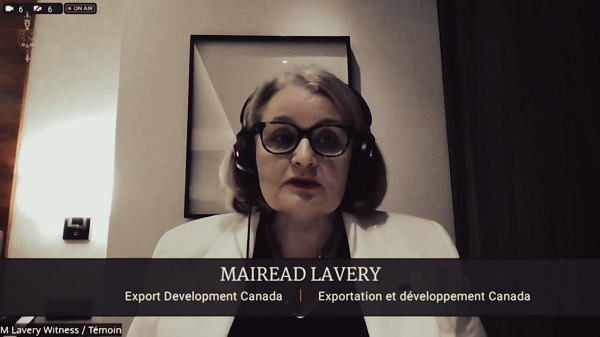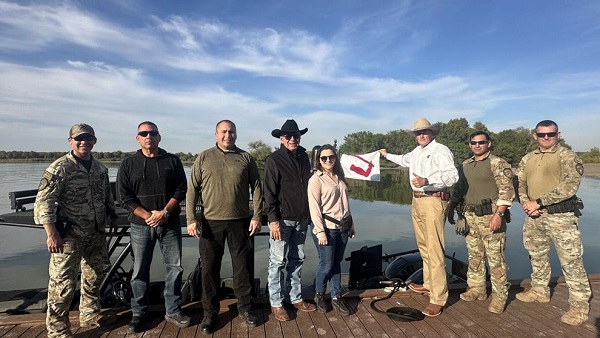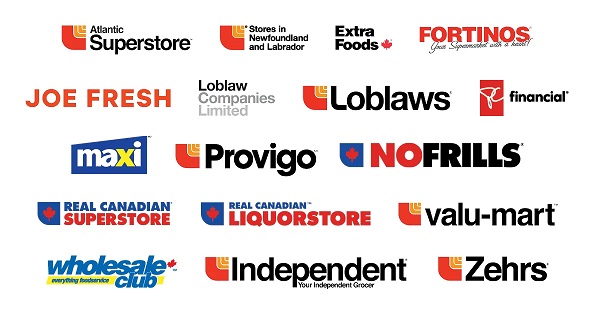Business
Auditor General: $3.5 Billion in CEBA Loans Went to Ineligible Businesses, Recovery Efforts Lacking.

A $3.5 Billion Disaster Exposes Government Negligence, Corporate Greed, and a Total Lack of Accountability
Welcome to the latest edition of “What the Government Doesn’t Want You to Know.” Tonight, we’re talking about Canada’s Canada Emergency Business Account (CEBA) program—a pandemic-era scheme that was supposed to help struggling businesses. Instead, it’s a case study in waste, corruption, and outright negligence.
Here’s what we learned during a bombshell hearing of the Standing Committee on Public Accounts (PACP) Wednesday: $3.5 billion in taxpayer money was handed out to ineligible businesses, 92% of the contracts went to one company, Accenture, without any competitive bidding, and there’s virtually no accountability for any of it.
Let’s break it down.
$3.5 Billion Vanishes, and No One Cares
Here’s what we learned from the Auditor General: The Canada Emergency Business Account program—$49 billion handed out to almost a million small businesses during the pandemic—was a mixed bag. On the one hand, they moved fast. Great. But on the other hand, it was a fiscal train wreck in terms of accountability. And let’s be clear: “accountability” is supposed to be their job.
Now, here’s the kicker. We find out that $3.5 billion—yes, billion with a “B”—went to businesses that didn’t even qualify. That’s our money, taxpayer money, handed over to ineligible recipients. What’s their excuse? Well, they were in a rush, they say. Of course, they were. Crises always become the justification for sloppy governance and waste.
Then there’s Export Development Canada—the folks running this show. They outsourced 92% of their contracts for this program to one company, Accenture. No competitive bidding, no oversight, just one big fat sweetheart deal. And get this: Accenture essentially got to write its own terms. They gave themselves the keys to the vault. They even built systems that made EDC dependent on them until 2028. That’s right—they locked themselves in for years, turning a pandemic emergency into a lucrative, long-term cash cow.
What about the Department of Finance and Global Affairs Canada? Were they stepping in, asking tough questions, setting clear limits? Nope. They were nowhere to be found. Total accountability vacuum. And by the way, administrative costs for this program? Over $850 million. Think about that. You can’t make this stuff up.
And when the Auditor General says, “Hey, maybe you should track down that $3.5 billion and recover it,” EDC just shrugs. They “partially agree.” Partially? Imagine if you told the CRA you “partially agree” with paying your taxes. See how that goes.
Here’s the reality: This is what happens when a government prioritizes speed over basic responsibility. They let the fox guard the henhouse, and now they want us to move on and forget about it. But we shouldn’t. This isn’t just bad management—it’s a betrayal of public trust. It’s our money, and they treated it like Monopoly cash.
So, who’s going to be held accountable? Who’s going to pay the price for this colossal mess? The answer, as usual, is probably no one.
Accenture’s Sweetheart Deal
Here’s the part that should really make your blood boil: $342 million worth of CEBA contracts went to consulting giant Accenture. No competitive bidding. No oversight. Nothing. Just a blank check from EDC with your money.
And it gets worse. Accenture didn’t just get the money—they subcontracted work to themselves. That’s right, they paid themselves with your money. And here’s the kicker: EDC is locked into contracts with Accenture until 2028. So, for the next four years, taxpayers will keep paying this consulting giant, all because EDC couldn’t be bothered to shop around or demand accountability.
Lavery’s excuse? “We needed speed and expertise during the pandemic.” Speed doesn’t justify corruption. It doesn’t justify giving one private company complete control over a multi-billion-dollar program. This isn’t just incompetence; it’s a rigged system designed to enrich consultants at the expense of taxpayers.
$853 Million in Administrative Costs
Let’s talk about efficiency—or the lack thereof. The CEBA program cost $853 million to administer. That’s $300 per loan, according to EDC. Lavery called that “reasonable.” Reasonable? For what? Businesses reported that the call center EDC spent $27 million on barely worked. Think about that: $27 million for a call center where you can’t even get someone to pick up the phone.
Conservative MP Brad Vis summed it up perfectly: “For $27 million, you’d expect a call center that actually answers calls.” But instead, Canadians got more of the same—an expensive, inefficient system that’s great for consultants and terrible for everyone else.
Conservatives Demand Accountability for CEBA Mismanagement: ‘A Blank Check for Consultants’
The Conservatives didn’t hold back in yesterday’s hearing, demanding accountability for what they called a blatant misuse of taxpayer dollars. Conservative MP Brad Vis led the charge, grilling EDC President Mairead Lavery on the $3.5 billion in loans that went to ineligible businesses. He didn’t mince words, calling out the government’s failure to put basic safeguards in place. “How did this happen, and what’s being done to recover this money?” Vis asked repeatedly, only to be met with vague assurances that EDC was “working with Finance Canada” on the issue. Translation: Nothing is actually happening.
MP Kelly McCauley took aim at the $342 million handed to Accenture without a single competitive bid. “How can you justify giving 92% of CEBA contracts to one company without opening it up to competition?” he asked, pointing out that Accenture even subcontracted work to itself, effectively turning the program into a taxpayer-funded cash cow for consultants. McCauley wasn’t buying Lavery’s excuses about pandemic urgency, pointing out that this kind of procurement failure wasn’t just a one-time mistake—it was a systemic problem.
John Nater, another Conservative MP, zeroed in on the long-term fallout. He expressed outrage that EDC is locked into a contract with Accenture until 2028, ensuring that taxpayers will continue funding this flawed system for years to come. Nater demanded to know why no one at EDC or in government thought it necessary to implement oversight mechanisms once the initial rollout phase had passed. “This isn’t just about speed. It’s about accountability. Where was the oversight? Where was the plan to safeguard public money?” Nater asked.
The Conservatives’ message was clear: this wasn’t just a case of pandemic-related haste—it was a failure of leadership, oversight, and governance. They demanded consequences for those responsible and reforms to prevent similar disasters in the future. As McCauley aptly put it, “This wasn’t an emergency response. It was a blank check for consultants, and taxpayers are the ones paying the price.”
Liberals Spin CEBA Disaster as a Success: ‘Sweeping It Under the Rug
The Liberal response to this mess was as predictable as it was infuriating: deny, deflect, and downplay. Instead of addressing the core issues—like the $3.5 billion in loans to ineligible businesses or the sweetheart contracts handed to Accenture—Liberal MPs spent their time patting themselves on the back for the program’s “success” and running interference for Export Development Canada (EDC).
Take Francis Drouin, for example. He spent his time emphasizing how quickly the CEBA program got money into the hands of struggling businesses. Sure, the program distributed $49.1 billion, but at what cost? When confronted with the Auditor General’s findings about fraud, waste, and mismanagement, Drouin brushed past the hard questions and pivoted back to the pandemic. It was a textbook move: ignore the billions lost and focus on how hard the government worked. Typical.
Then there was Valerie Bradford, who followed the same script. Instead of demanding answers about why 92% of contracts went to one consulting firm without competitive bidding, she lobbed softball questions that gave EDC President Mairead Lavery the chance to repeat her excuses about “urgency” and “unprecedented circumstances.” Bradford didn’t challenge the inflated administrative costs, the useless $27 million call center, or the lack of oversight. Instead, she chose to frame the discussion as if this was all just the price of doing business in a crisis.
This wasn’t accountability. This was damage control. The Liberals weren’t there to ask hard questions—they were there to protect their narrative. To them, it doesn’t matter that taxpayers got fleeced. It doesn’t matter that consultants got rich while businesses were left waiting for answers. All that matters is spinning this disaster into a success story, no matter how far from the truth that is.
What’s most galling is the arrogance. The Liberals seem to think Canadians should be grateful for a program that wasted billions, enriched corporations, and locked taxpayers into a disastrous contract until 2028. It’s as if they expect a thank-you card for their incompetence.
Here’s the reality: the Liberal response wasn’t about addressing the scandal. It was about sweeping it under the rug. And unless Canadians demand better, this is the kind of governance they’ll keep getting: one where failure is rebranded as success, and no one ever takes responsibility for the consequences.
Final Thoughts
So, what did we learn from this so-called committee meeting? We learned that billions of taxpayer dollars can be wasted, handed out to ineligible businesses, and funneled into the pockets of consultants without anyone in government blinking an eye. We learned that accountability is a foreign concept in Ottawa, where “working on it” is the go-to excuse for incompetence and outright negligence.
Export Development Canada failed. The Department of Finance failed. The Liberals in charge failed. But here’s the kicker—no one will pay for it. Not the bureaucrats who bungled the program, not the consultants who profited from it, and certainly not the politicians who allowed this circus to happen.
Instead, we got a performance. A parade of excuses, vague promises, and shameless spin. The Conservatives tried to hold the government’s feet to the fire, but the Liberals spent their time running cover for the mess they created. And the Bloc and NDP, while occasionally landing a punch, ultimately let the bureaucrats wiggle off the hook. This wasn’t accountability; it was theater.
The CEBA program wasn’t just a failure—it was a lesson in how the system really works. When there’s no oversight, no consequences, and no urgency to fix anything, corruption and incompetence become the norm. Consultants get rich, bureaucrats get a pass, and taxpayers get the bill.
And the people running this committee? They’re part of the problem. They don’t want to fix the system because the system works perfectly for them. It rewards their friends, protects their power, and keeps them unaccountable. This wasn’t a hearing; it was a farce. And unless Canadians demand real change, this won’t be the last time their government lets them down.
So, ask yourself this: How much more are you willing to let them get away with? Because as long as you stay quiet, they’ll keep doing exactly what they did here—wasting your money, spinning their failures, and walking away without a scratch.
Please consider subscribing to The Opposition with Dan Knight .
For the full experience, upgrade your subscription.
Business
Inflation Reduction Act, Green New Deal Causing America’s Energy Crisis


From the Daily Caller News Foundation
By Greg Blackie
Our country is facing an energy crisis. No, not because of new demand from data centers or AI. Instead, it’s because utilities in nearly every state, due to government imposed “renewable” mandates, self-imposed mandates, and the supercharging of the Green New Scam under the so-called “Inflation Reduction Act,” have been shutting down vital coal resources and building out almost exclusively intermittent and costly resources like solar, wind, and battery storage.
President Donald Trump understands this, and that is why on day one of his administration he declared an Energy Emergency. Then, a few months later, the President signed a trio of Executive Orders designed to keep our “beautiful, clean coal” burning and providing the reliable, baseload, and affordable electricity Americans have benefitted from for generations.
Those orders have been used to keep coal generation online that was slated to shut down in Michigan and will potentially keep two units operating that were scheduled to shut down in Colorado this December. In Arizona, however, the Cholla Power Plant in Navajo County was shuttered by the utility just weeks after Trump explicitly called out the plant for saving in a press conference.
Dear Readers:
As a nonprofit, we are dependent on the generosity of our readers.
Please consider making a small donation of any amount here.
Thank you!
Unlike states with green mandates, Arizona essentially has none. Instead, our utilities, like many around the country, have self-imposed commitments to go “Net Zero” by 2050. To meet that target, they have planned to shut down all coal generation in the state by 2032 and plan to build out almost exclusively solar, wind, and battery storage to meet an expected explosive growth in demand, at a cost of tens of billions of dollars. So it is no surprise that like much of the rest of the country, Arizona is facing an energy crisis.
Taking a look at our largest regulated utilities (APS, TEP, and UNS) and the largest nonprofit utility, SRP, future plans paint an alarming picture. Combined, over the next 15 years, these utilities expect to see demand increase from 19,200 MW to 28,000 MW. For reference, 1,000 MW of electricity is enough to power roughly 250,000 homes. To meet that growth in demand, however, Arizonans will only get a net increase of 989 MW of reliable generation (coal, natural gas, and nuclear) compared to 22,543 MW (or nearly 23 times as much) of intermittent solar, wind, and battery storage.
But what about all of the new natural gas coming into the state? The vast majority of it will be eaten up just to replace existing coal resources, not to bring additional affordable energy to the grid. For example, the SRP board recently voted to approve the conversion of their Springerville coal plant to natural gas by 2030, which follows an earlier vote to convert another of their coal plants, Coronado, to natural gas by 2029. This coal conversion trap leaves ratepayers with the same amount of energy as before, eating up new natural gas capacity, without the benefit of more electricity.
So, while the Arizona utilities plan to collectively build an additional 4,538 MW of natural gas capacity over the next 15 years, at the same time they will be removing -3,549 MW (all of what is left on the grid today) of coal. And there are no plans for more nuclear capacity anytime soon. Instead, to meet their voluntary climate commitments, utilities plan to saddle ratepayers with the cost and resultant blackouts of the green new scam.
It’s no surprise then that Arizona’s largest regulated utilities, APS and TEP, are seeking double digit rate hikes next year. It’s not just Arizona. Excel customers in Colorado (with a 100% clean energy commitment) and in Minnesota (also with a 100% clean energy commitment) are facing nearly double-digit rate hikes. The day before Thanksgiving, PPL customers in Rhode Island (with a state mandate of 100% renewable by 2033) found out they may see rate hikes next year. Dominion (who has a Net Zero by 2050 commitment) wanted to raise rates for customers in Virginia by 15%. Just last month, regulators approved a 9% increase. Importantly, these rate increases are to recover costs for expenses incurred years ago, meaning they are clearly to cover the costs of the energy “transition” supercharged under the Biden administration, not from increased demand from data centers and AI.
It’s the same story around the country. Electricity rates are rising. Reliability is crumbling. We know the cause. For generations, we’ve been able to provide reliable energy at an affordable cost. The only variable that has changed has been what we are choosing to build. Then, it was reliable, dispatchable power. Now, it is intermittent sources that we know cost more, and that we know cause blackouts, all to meet absurd goals of going 100% renewable – something that no utility, state, or country has been able to achieve. And we know the result when they try.
This crisis can be avoided. Trump has laid out the plan to unleash American Energy. Now, it’s time for utilities to drop their costly green new scam commitments and go back to building reliable and affordable power that generations to come will benefit from.
Greg Blackie, Deputy Director of Policy at the Arizona Free Enterprise Club. Greg graduated summa cum laude from Arizona State University with a B.S. in Political Science in 2019. He served as a policy intern with the Republican caucus at the Arizona House of Representatives and covered Arizona political campaigns for America Rising during the 2020 election cycle.
Business
Fuelled by federalism—America’s economically freest states come out on top

From the Fraser Institute
Do economic rivalries between Texas and California or New York and Florida feel like yet another sign that America has become hopelessly divided? There’s a bright side to their disagreements, and a new ranking of economic freedom across the states helps explain why.
As a popular bumper sticker among economists proclaims: “I heart federalism (for the natural experiments).” In a federal system, states have wide latitude to set priorities and to choose their own strategies to achieve them. It’s messy, but informative.
New York and California, along with other states like New Mexico, have long pursued a government-centric approach to economic policy. They tax a lot. They spend a lot. Their governments employ a large fraction of the workforce and set a high minimum wage.
They aren’t socialist by any means; most property is still in private hands. Consumers, workers and businesses still make most of their own decisions. But these states control more resources than other states do through taxes and regulation, so their governments play a larger role in economic life.
At the other end of the spectrum, New Hampshire, Tennessee, Florida and South Dakota allow citizens to make more of their own economic choices, keep more of their own money, and set more of their own terms of trade and work.
They aren’t free-market utopias; they impose plenty of regulatory burdens. But they are economically freer than other states.
These two groups have, in other words, been experimenting with different approaches to economic policy. Does one approach lead to higher incomes or faster growth? Greater economic equality or more upward mobility? What about other aspects of a good society like tolerance, generosity, or life satisfaction?
For two decades now, we’ve had a handy tool to assess these questions: The Fraser Institute’s annual “Economic Freedom of North America” index uses 10 variables in three broad areas—government spending, taxation, and labor regulation—to assess the degree of economic freedom in each of the 50 states and the territory of Puerto Rico, as well as in Canadian provinces and Mexican states.
It’s an objective measurement that allows economists to take stock of federalism’s natural experiments. Independent scholars have done just that, having now conducted over 250 studies using the index. With careful statistical analyses that control for the important differences among states—possibly confounding factors such as geography, climate, and historical development—the vast majority of these studies associate greater economic freedom with greater prosperity.
In fact, freedom’s payoffs are astounding.
States with high and increasing levels of economic freedom tend to see higher incomes, more entrepreneurial activity and more net in-migration. Their people tend to experience greater income mobility, and more income growth at both the top and bottom of the income distribution. They have less poverty, less homelessness and lower levels of food insecurity. People there even seem to be more philanthropic, more tolerant and more satisfied with their lives.
New Hampshire, Tennessee, and South Dakota topped the latest edition of the report while Puerto Rico, New Mexico, and New York rounded out the bottom. New Mexico displaced New York as the least economically free state in the union for the first time in 20 years, but it had always been near the bottom.
The bigger stories are the major movers. The last 10 years’ worth of available data show South Carolina, Ohio, Wisconsin, Idaho, Iowa and Utah moving up at least 10 places. Arizona, Virginia, Nebraska, and Maryland have all slid down 10 spots.
Over that same decade, those states that were among the freest 25 per cent on average saw their populations grow nearly 18 times faster than those in the bottom 25 per cent. Statewide personal income grew nine times as fast.
Economic freedom isn’t a panacea. Nor is it the only thing that matters. Geography, culture, and even luck can influence a state’s prosperity. But while policymakers can’t move mountains or rewrite cultures, they can look at the data, heed the lessons of our federalist experiment, and permit their citizens more economic freedom.
-

 Alberta19 hours ago
Alberta19 hours agoThe Recall Trap: 21 Alberta MLA’s face recall petitions
-

 illegal immigration19 hours ago
illegal immigration19 hours agoUS Notes 2.5 million illegals out and counting
-

 International19 hours ago
International19 hours agoTyler Robinson shows no remorse in first court appearance for Kirk assassination
-

 Fly Straight - John Ivison2 days ago
Fly Straight - John Ivison2 days agoMPs who cross the floor are dishonourable members
-

 Energy1 day ago
Energy1 day agoCanada’s future prosperity runs through the northwest coast
-

 2025 Federal Election2 days ago
2025 Federal Election2 days agoToo Close for Comfort: Carney Floor Crosser Comes From a Riding Tainted by PRC Interference
-

 illegal immigration2 days ago
illegal immigration2 days agoEXCLUSIVE: Canadian groups, First Nation police support stronger border security
-

 Business2 days ago
Business2 days agoBrutal economic numbers need more course corrections from Ottawa











